Peerdom for Sociocracy - Customization & Best Practices
Sociocracy is a system of governance principles and patterns designed to improve productivity, wellbeing, and organizational resilience. It proposes flexible practices to structure, manage, and continuously improve your organization.
Peerdom provides specific apps and features designed for sociocratic organizations. Here’s how you can customize Peerdom to enable sociocracy for your organization.
Map your organization structure with circles
In sociocracy, organizations are composed of dynamic, interconnected circles. Each circle operates as a semi-autonomous group of peers with decision-making authority within their defined domain. This approach fosters responsible individuals capable of decision-making within their scope of influence.
Peerdom supports mapping circle structures. You can add as many circles as necessary to distribute work effectively. For each circle, clearly define an aim - what the circle is going to do to work toward its mission. Also define its domain, which determines the circle’s scope of responsibility and authority.
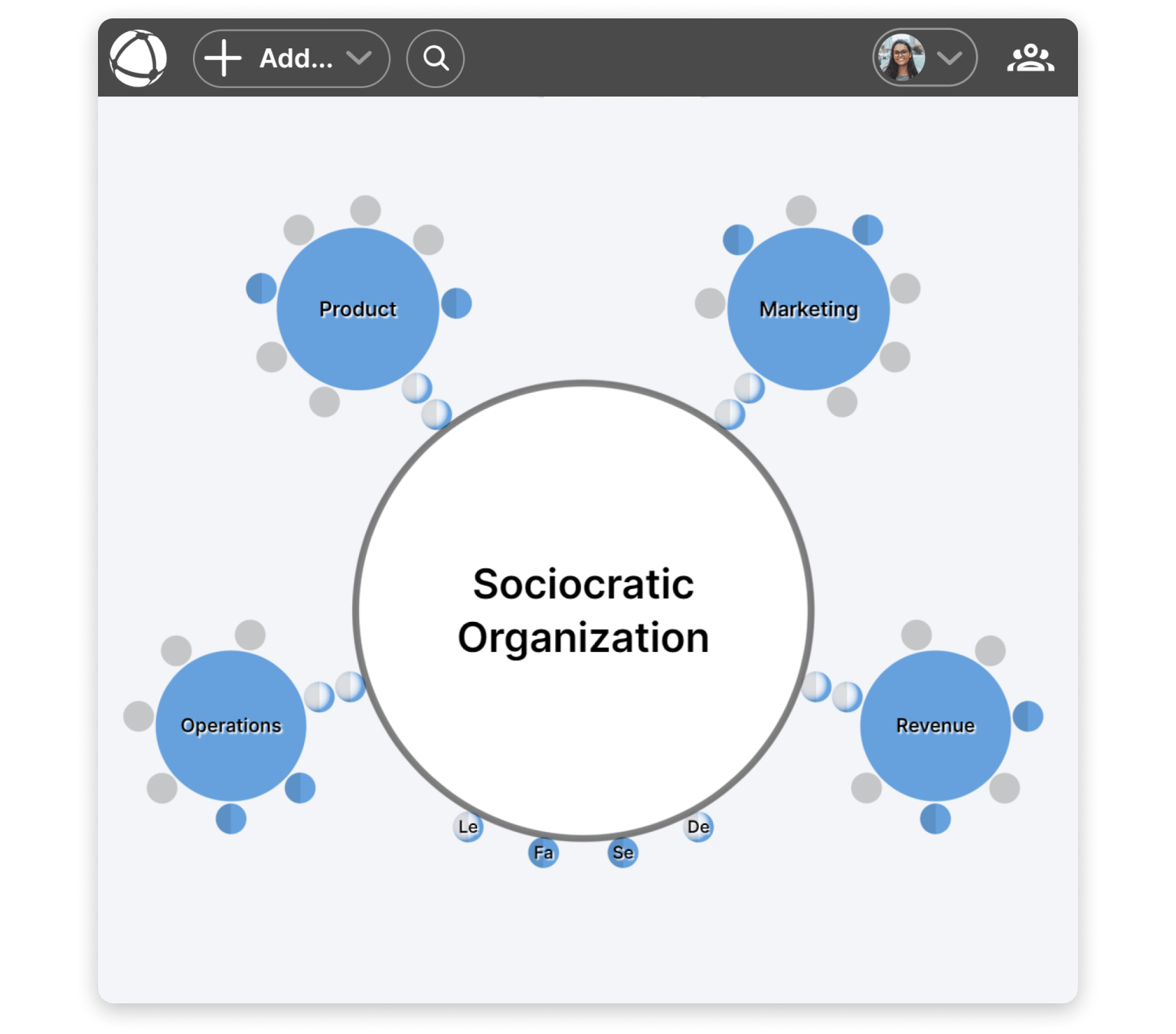
As your organization evolves or becomes more specialized, you can introduce more complex structures by adding sub-circles as needed. Nested circle hierarchies enhance clarity over responsibilities and accountability within each domain.
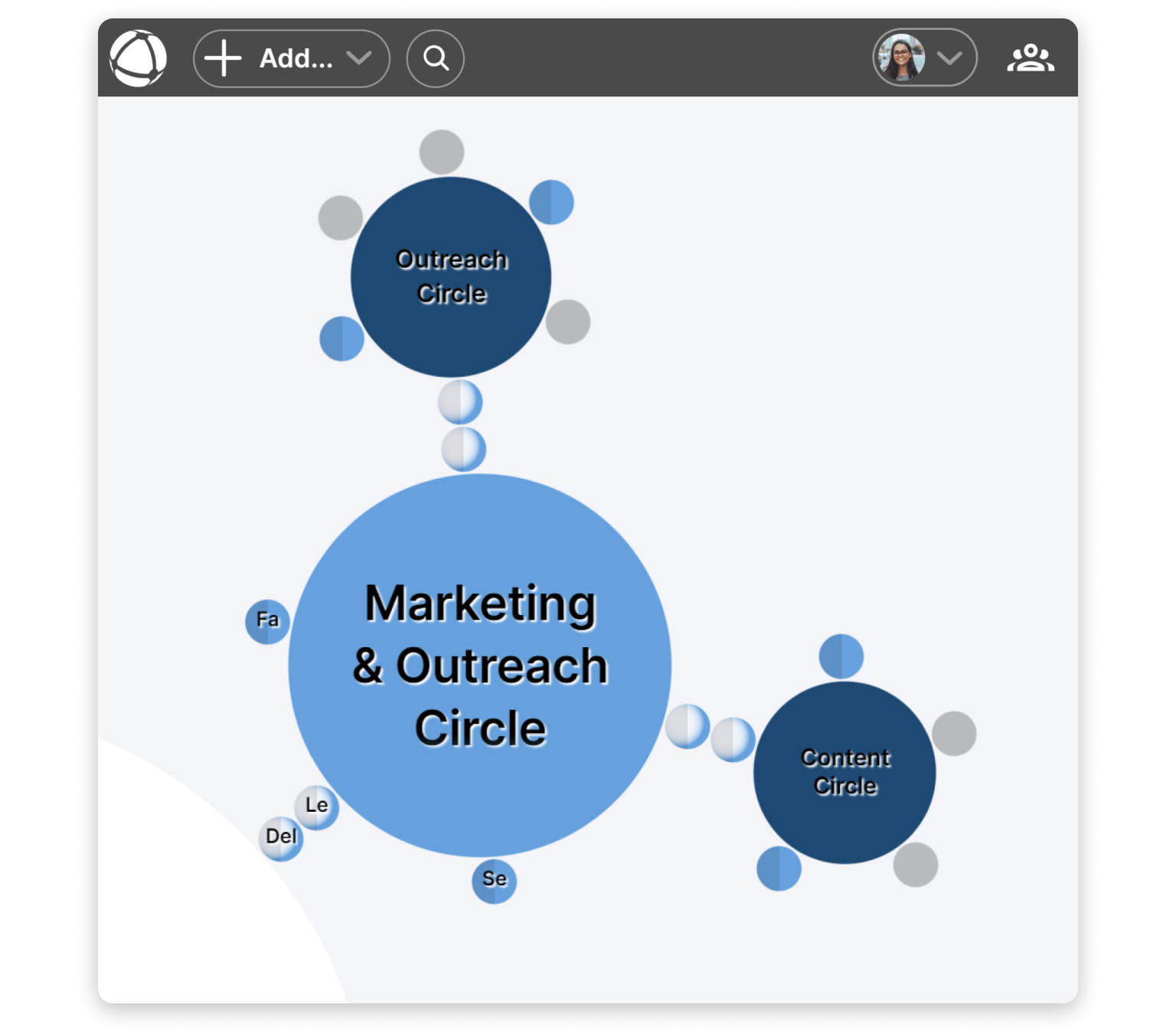
Customize your map layout and vocabulary
Sociocracy comes with specific terms to describe an organization and its processes. With Peerdom, you can fine-tune the map vocabulary to reflect the most common sociocracy terms. Simply choose from the list of options in the Vocabulary Settings.
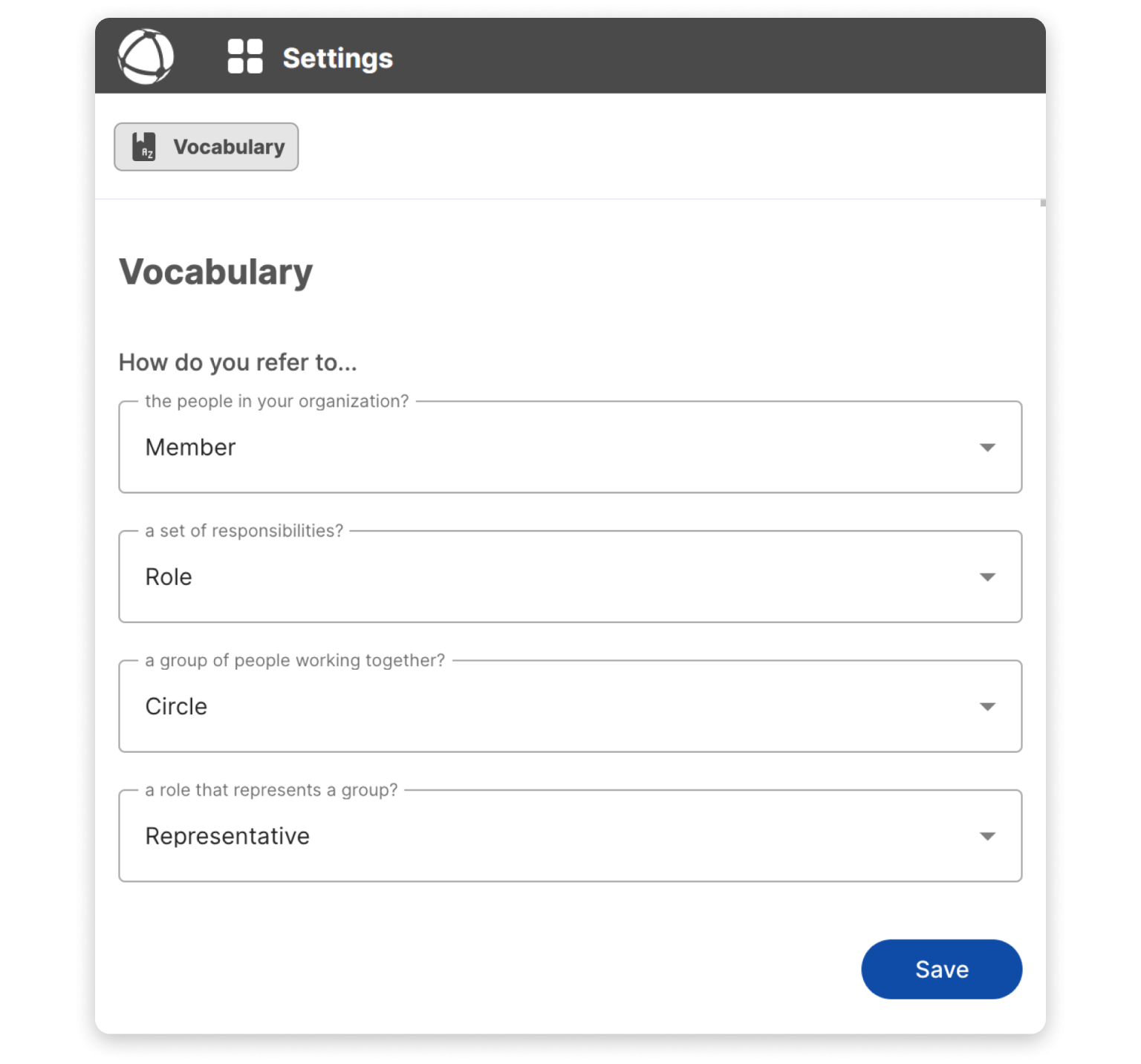
Peerdom provides two map layouts to visualize sociocratic organizations: the flattened cactus flower and the line layout. These layouts are designed to represent the structure and interrelationships within your organization. When looking at the map, these layouts resemble people sitting around a table – a metaphor for how every circle member has a voice within sociocratic organizations.
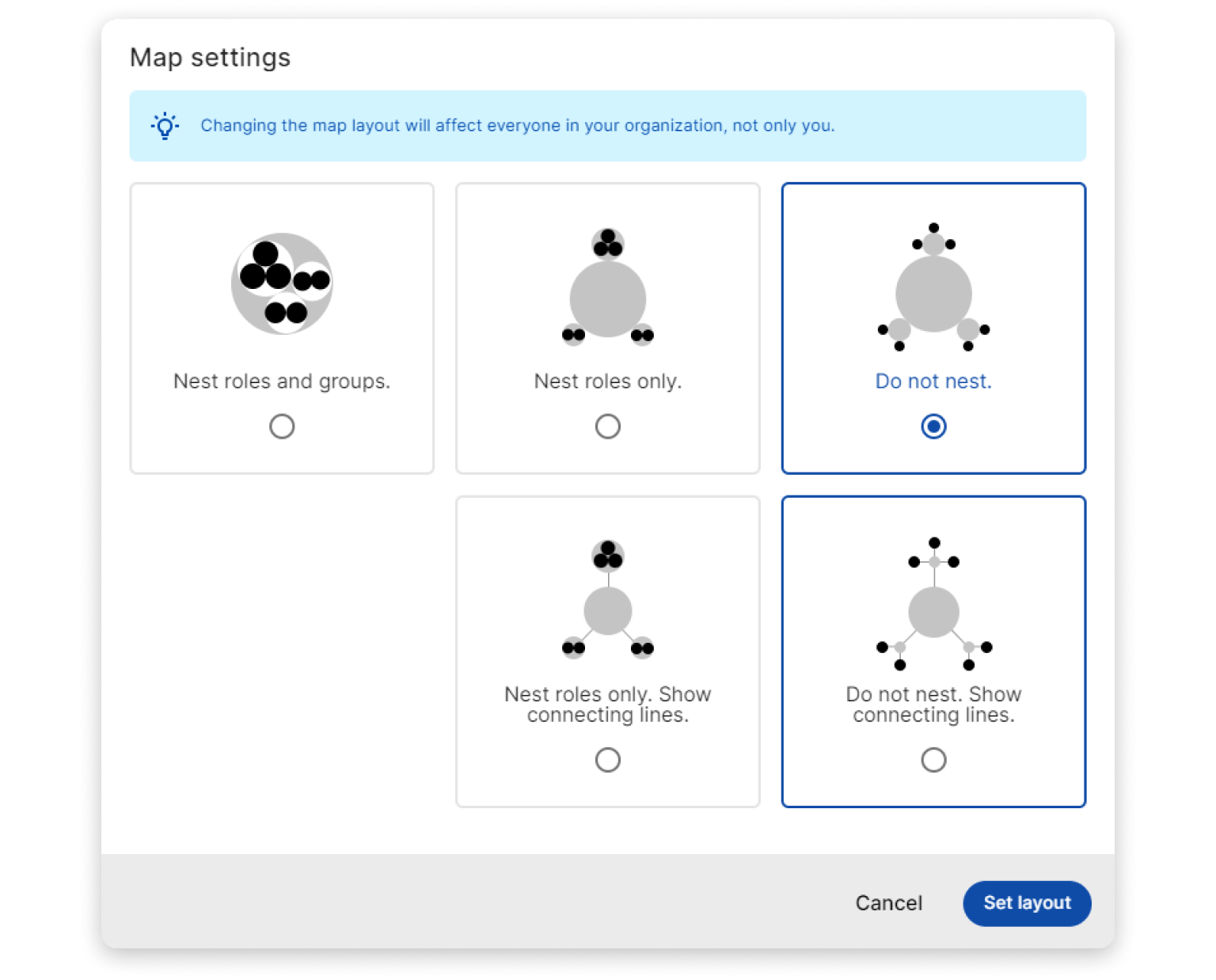
Distribute work into roles
Roles are a fundamental building block in sociocracy. They ensure effective governance within circles and across the organization. Clear role definitions are essential to translating responsibilities into actionable work and to reduce the risk of two people mistakenly working on the same thing twice.
In Peerdom, you can create detailed role descriptions to specify responsibilities and domains of authority. Assigning clear roles to members of your organization empowers them to understand both their own roles and those of their peers.
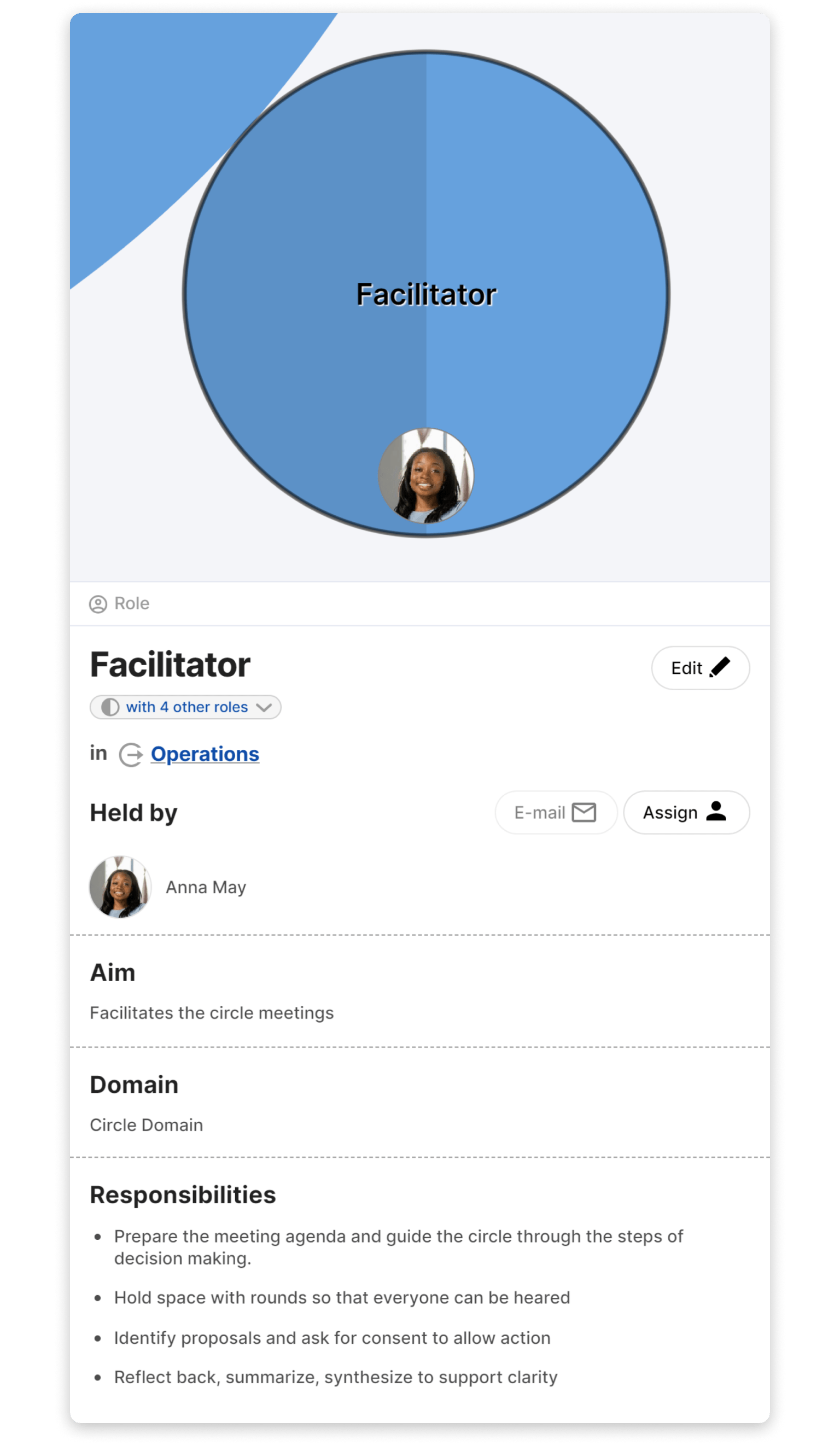
Furthermore, you can make sociocracy-specific circle roles (also known as process roles) stand out, highlighting their relevance within the greater organizational structure.
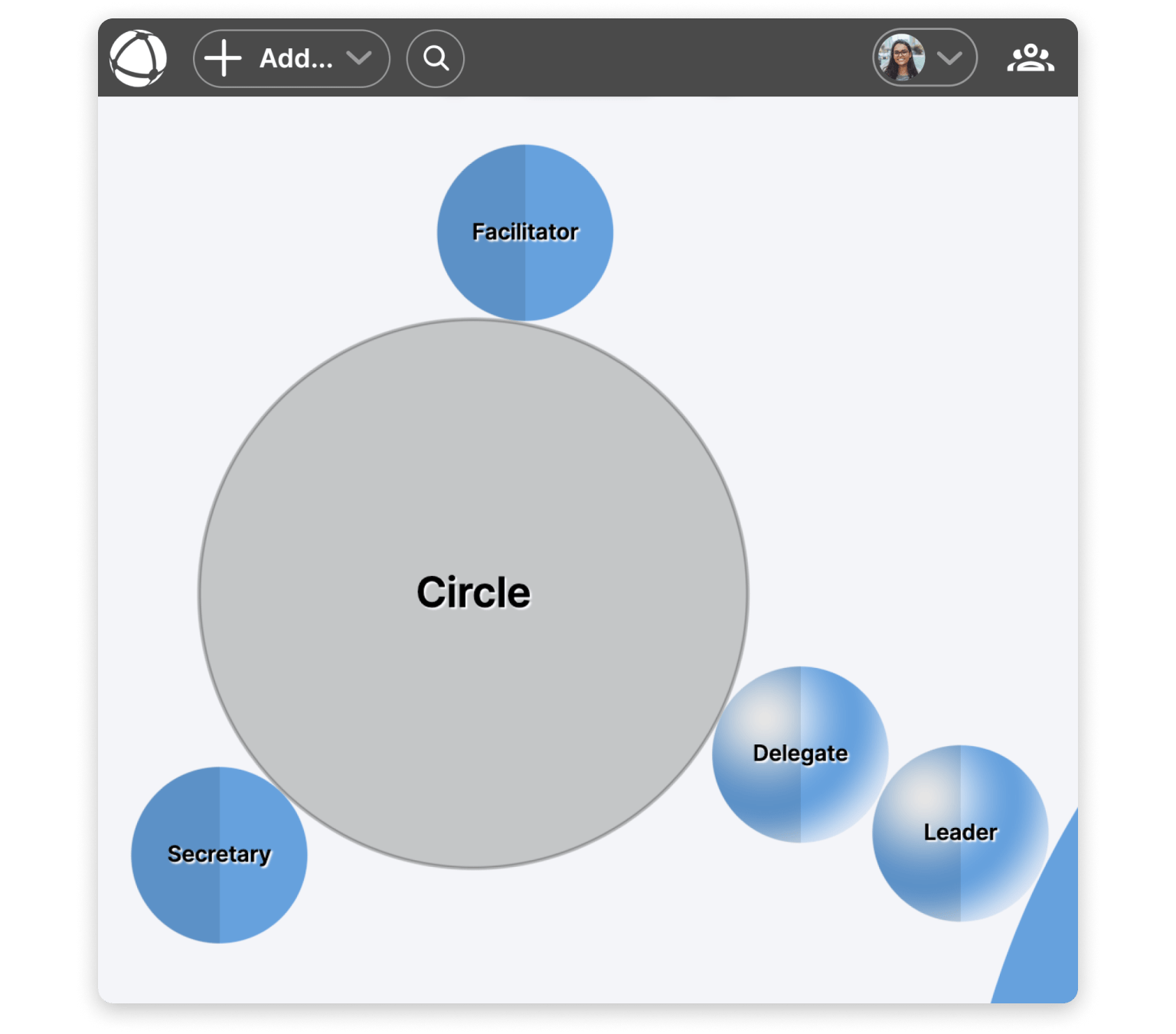
Roles that link a circle to the larger context, such as the Leader and Delegate roles, receive a special visual treatment if you mark them as a representative role of a circle. You can even double-link circles, ensuring that information flows freely and their decisions align.
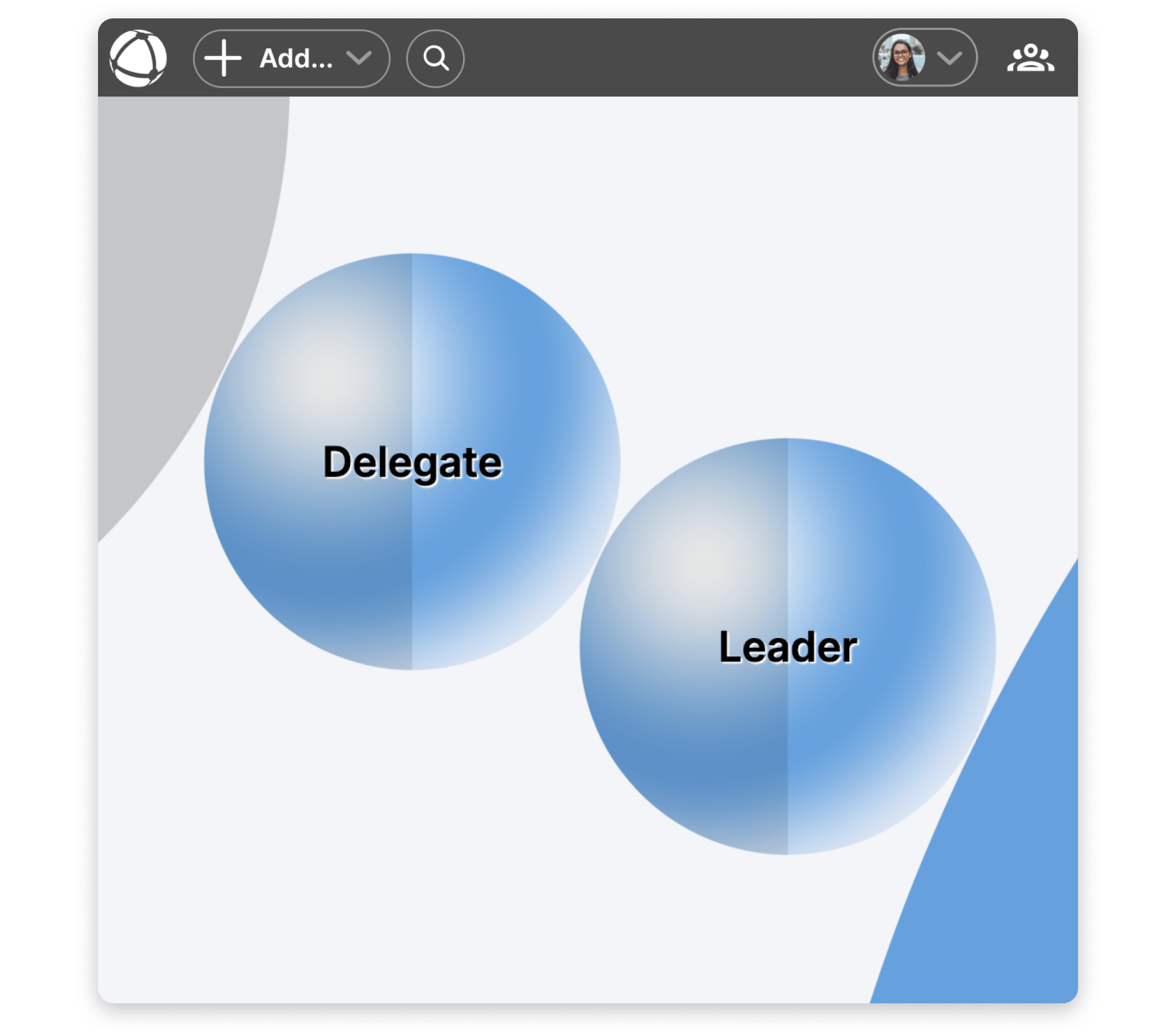
Lastly, you can use the role-mirroring feature to ensure a consistent definition of circle roles throughout your entire organization. Mirroring a role means that its aim, domains, responsibilities, and color remain the same across different circles. This standardized definition does not include role assignment; you can assign each mirrored role to a different individual.
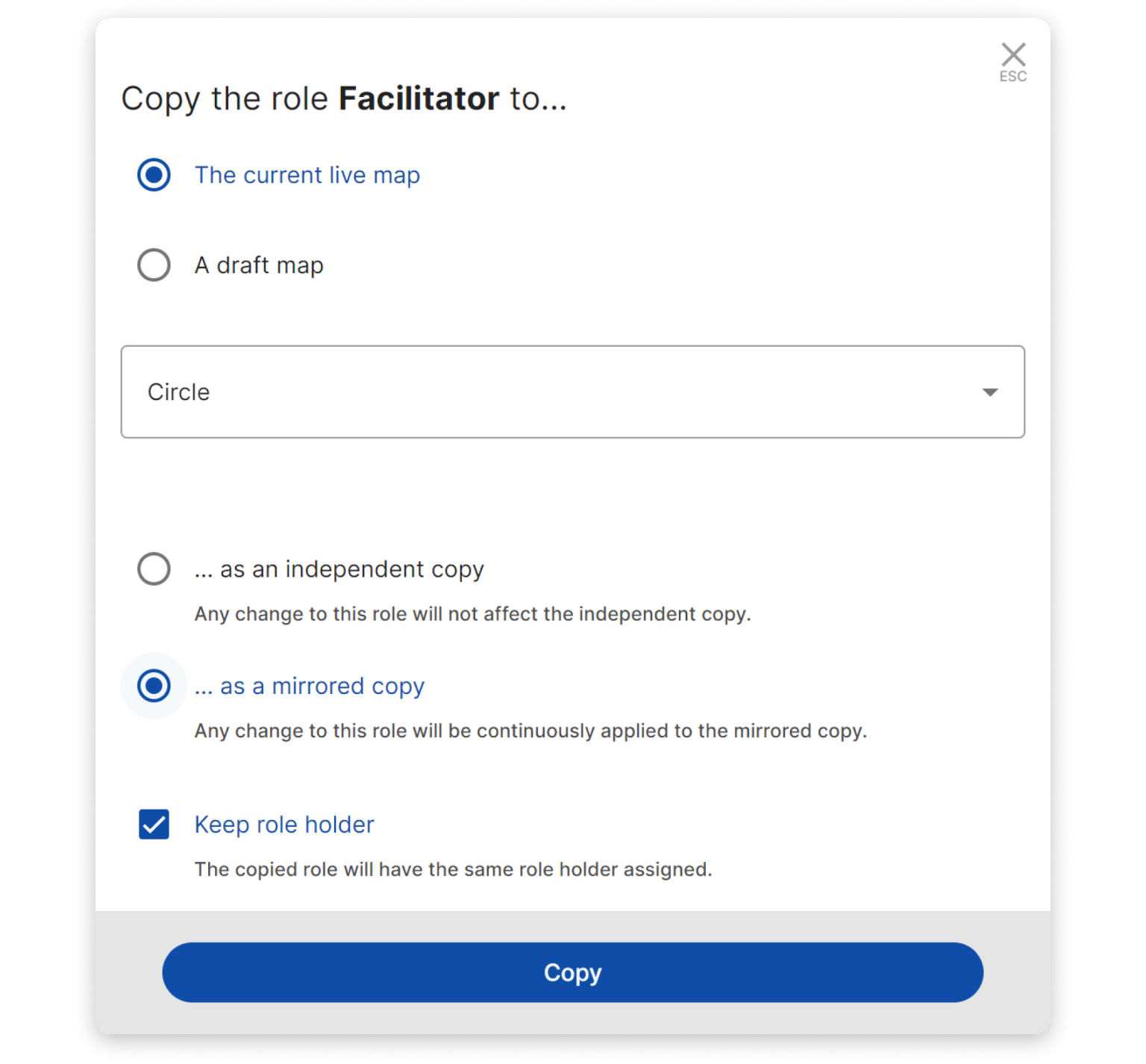
Foster inclusive and transparent decision-making
In sociocratic organizations, decision-making is collaborative and inclusive. Circles use consent-based decision-making to make policy decisions and elect roles. To ensure the integrity and transparency of the organizational processes, it is crucial to track decisions throughout the organization.
Peerdom supports transparent decision logging with its Pages app. With Pages, you can document proposals, decisions, working agreements and organizational policies for all circles, ensuring that information is accessible to all members of the organization.
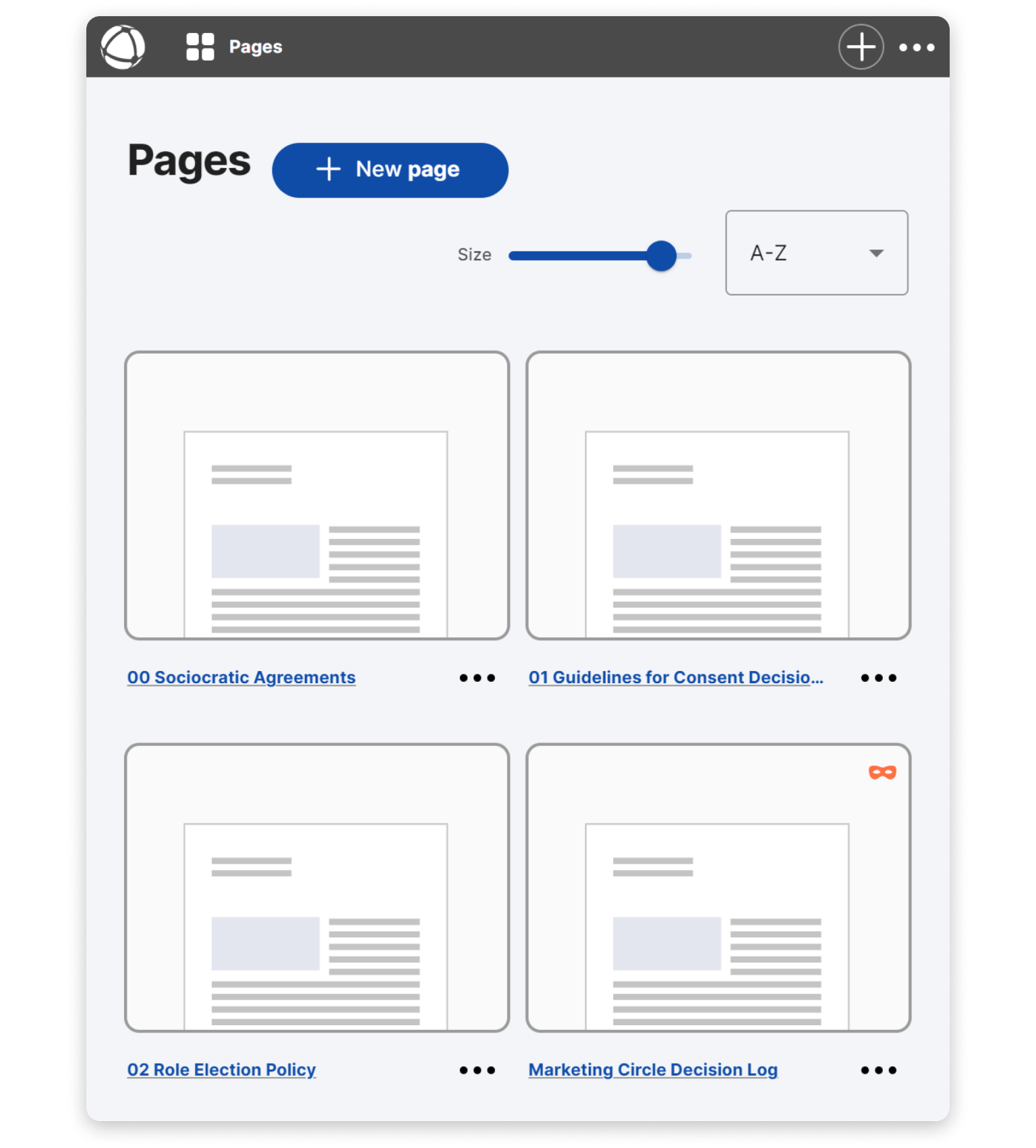
In sociocracy, certain roles can be assigned through an election process. The Elections app manages the sociocratic election process. It provides clear visualization of electable roles, keeps historical data on elected role assignees and sends reminders for upcoming elections. Activate the app to streamline sociocratic role elections.
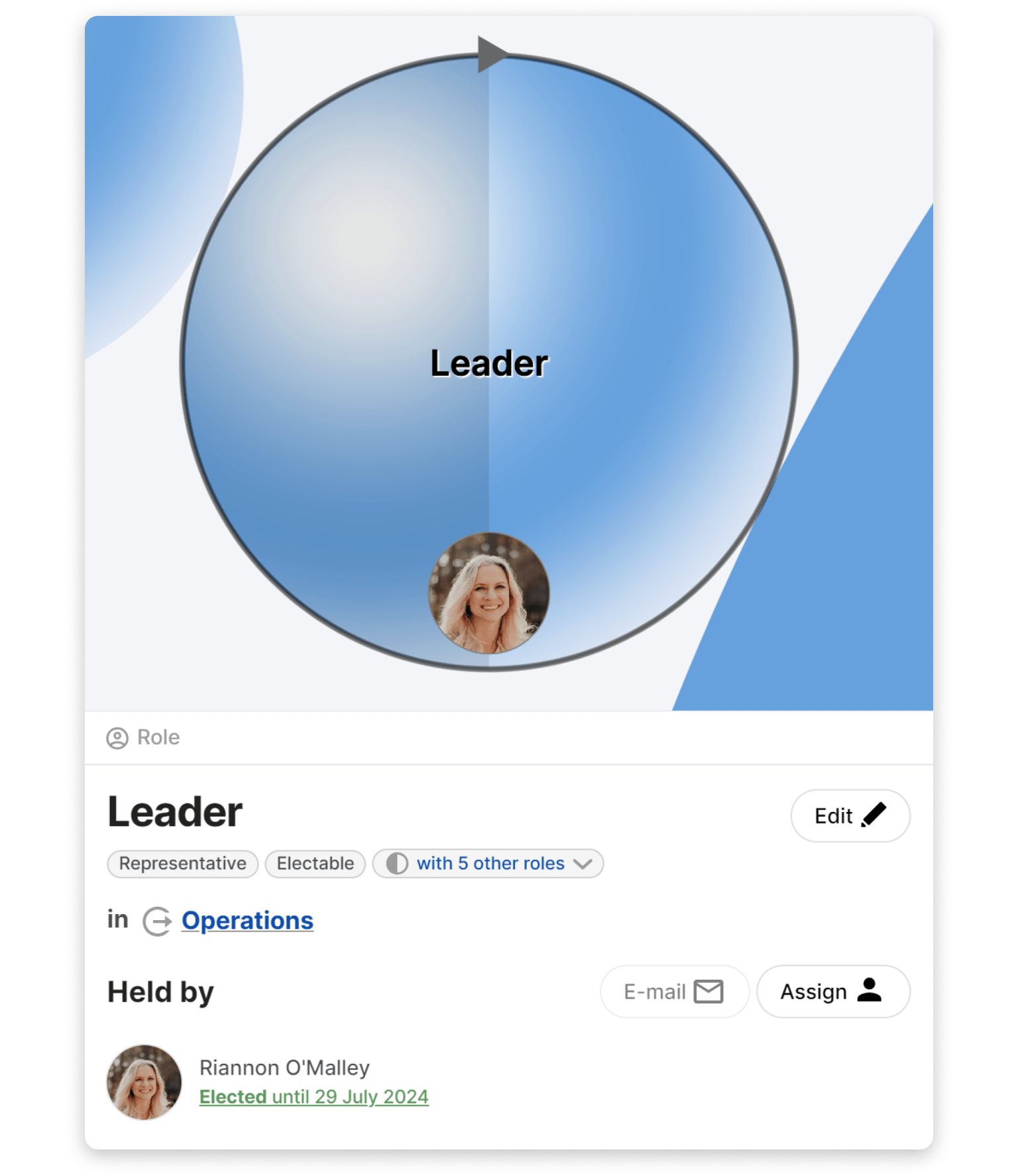
Engage in continuously developing your organization
Continuous improvement is a key promise of sociocracy, and Peerdom facilitates this through dynamic, on-the-fly updates. All updates to roles, circles and your organizational structure are instantly visible to anyone viewing your organization map. This results in a common, shared map for your evolving organization.

Relatedly, the Journal app chronicles historical changes to roles and structures, offering additional valuable context on your organization's evolution. Learn from your past experiences to make more informed decisions in the future.
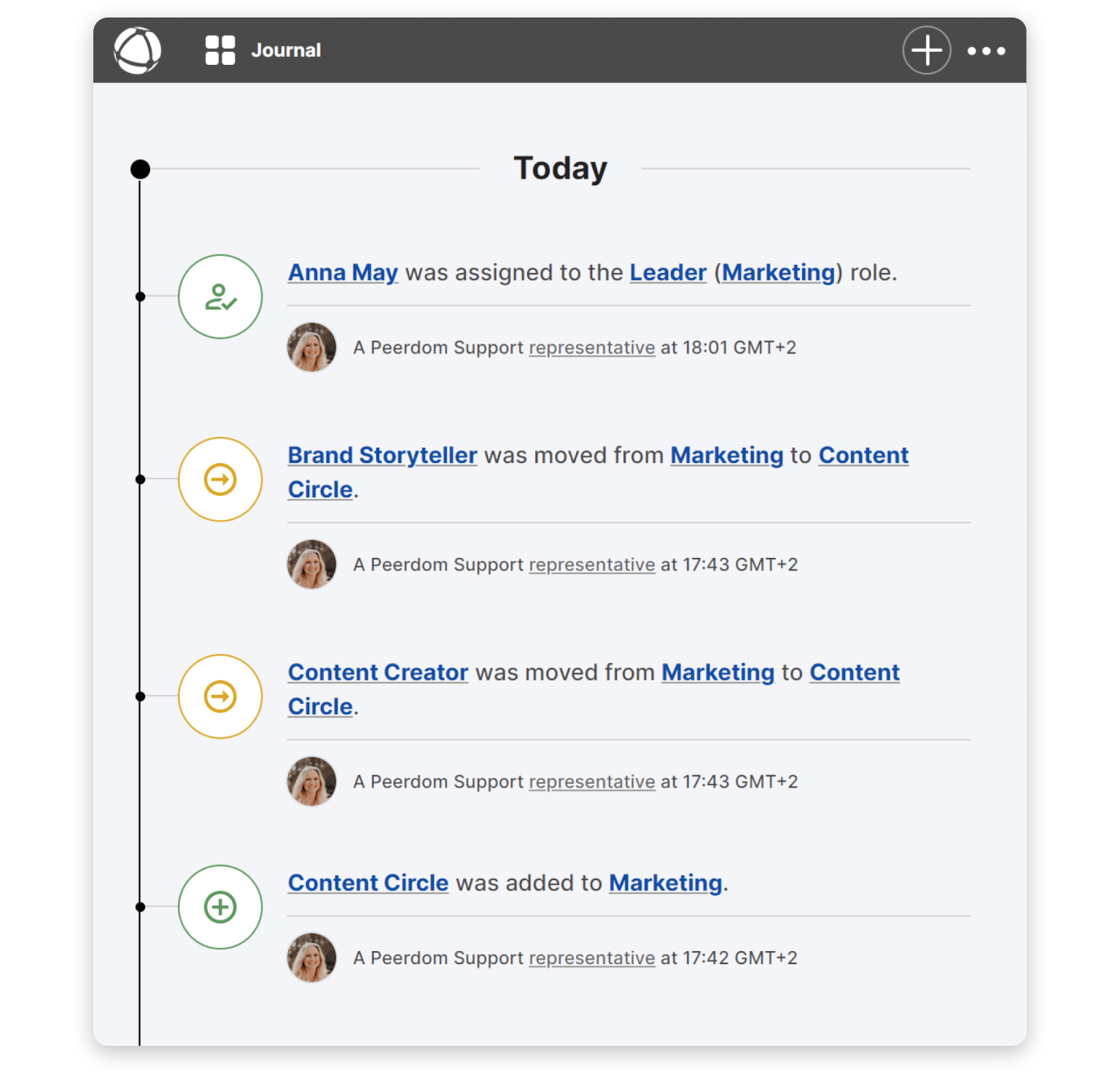
You can also explore the Insights app to monitor your organization’s work distribution health. This app provides more perspectives to be used for continuous improvement, including warnings on how your work is distributed amongst peers. Use Insights app to make data-driven decisions on what to focus on when improving your organization.
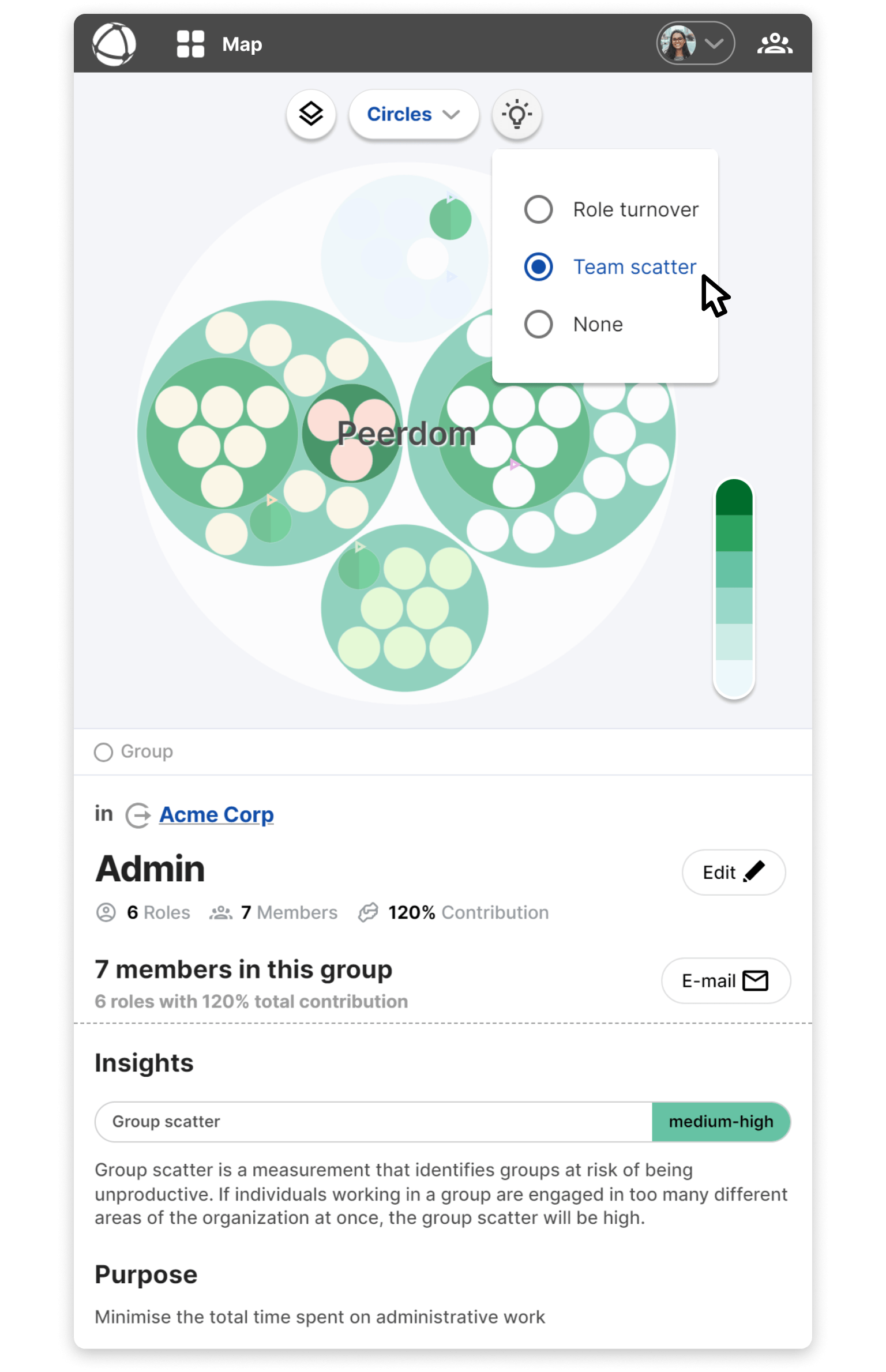
Finally, consider using the Feedback app to improve your organization. The Feedback app allows circle members to provide one another role-to-role feedback concerning their roles and decisions. Regular feedback ensures that processes and practices are continually evaluated and improved. Feedback loops can also strengthen personal and professional development while fostering accountability in one’s roles.
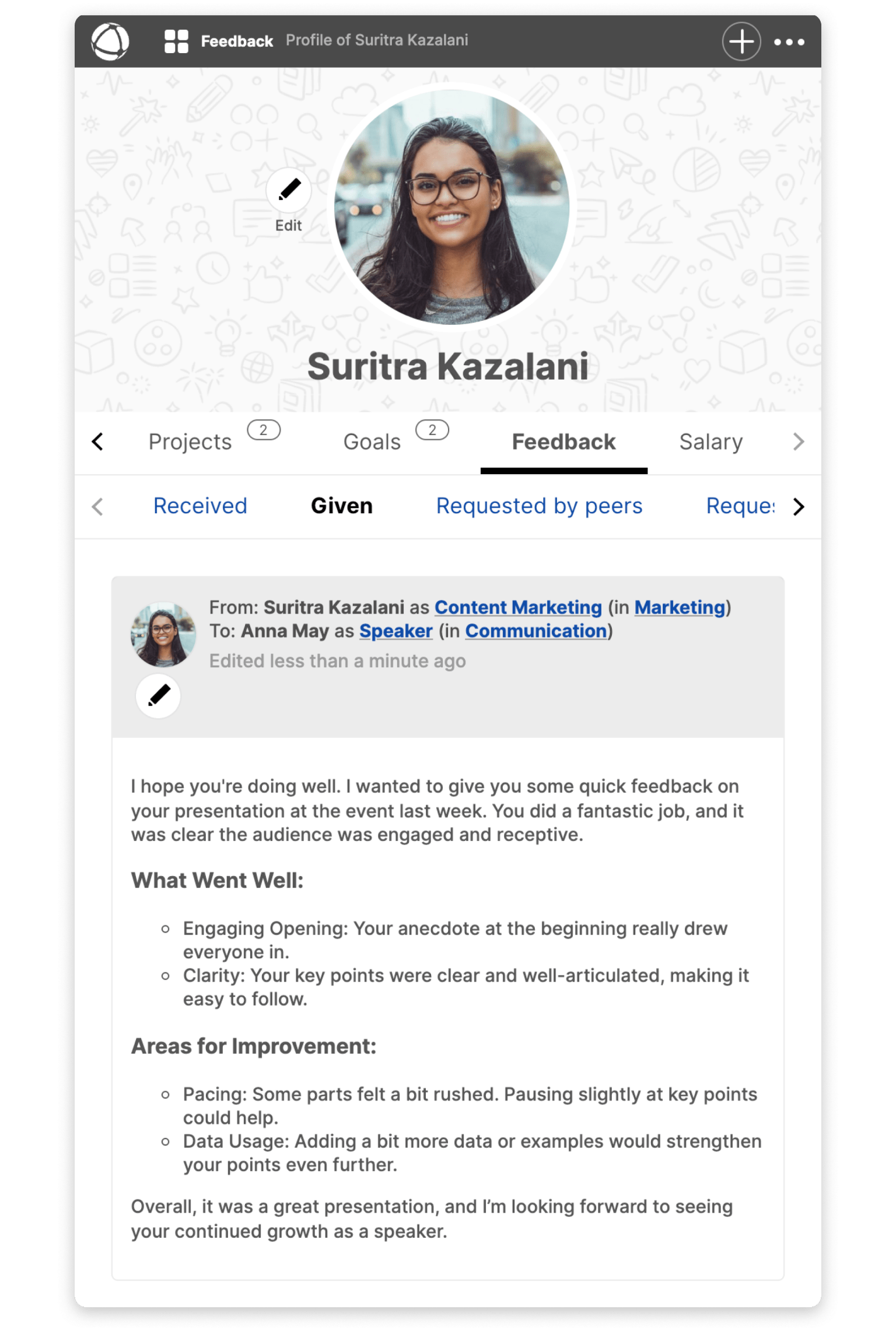
Step into action
Now that you have an overview of the powerful tools available for your organization, you can take the first step on your sociocratic journey with Peerdom today.
Get mapping with our fully customizable sociocracy map template or contact us to set up a personalized Peerdom demo.
